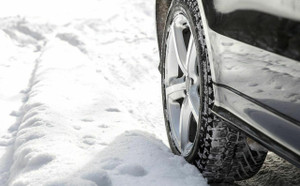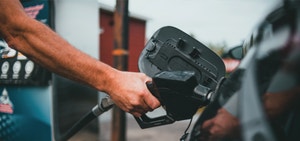Get your car ready for the winter
By Kijiji Autos
Winter tires, anti-freeze… prepare your vehicle now for the cold months ahead.
Editor’s note: This article has been newly updated.
Here are 10 tips to get your car ready for the rigours of our icy roads.
1. Install winter tires
Designed to grip better on cold, snowy and icy roads, with better elasticity and deeper grooves, winter tires offer much safer driving and shorter braking distances than four-season tires.
All Canadian provinces and territories have recommended dates for having winter tires installed. In Quebec, you must drive with winter tires between December 15 and March 15 or face stiff fines. It’s the law. To check the wear on your winter tires, use a depth gauge or insert a quarter into a groove in the tread. If the tip of the caribou’s nose protrudes beyond the rim of the groove when it’s facing the bottom of the tread, the tire is worn out and needs replacing.
2. Verification and repair
Check the spark plugs, brakes, suspension and belts to ensure that everything is in working order before you head onto the slick roads. Replace parts where needed and make the necessary repairs. Consider wax or anti-rust treatment to prevent problems down the line. Do not hesitate to count on a qualified mechanic to inspect and repair your car.
3. Change the oil
Using an oil adapted to winter weather conditions reduces engine wear and avoids the inconvenience of breakdowns that could be much more expensive than an oil change!
4. Check the antifreeze
Have your vehicle’s cooling system checked. The time between these checks varies from one car brand to another depending on the antifreeze used. Consult the owner’s manual of your vehicle for the manufacturer’s recommended interval.
5. See clearly
In winter, the ice, snow and slush splashing on your windshield and rear window can seriously affect your vision. It’s important to check that your windshield wipers are not dry, cracked or worn out. If they are leaving streaks or showing signs of wear, switch them out for new blades. Frequently check your washer fluid level and make sure the front and rear defrosters work perfectly.
6. Be visible
Freezing rain, storms and gusts of snow, along with much longer nights, can make your vehicle virtually invisible after sundown, especially if it’s a darker colour. You must see and be seen. Make sure your front and rear lights, and your turn signals, work perfectly – and if a light is burned out, replace it immediately.
7. Check the battery
A battery that is old (or in bad shape) is all but guaranteed not to start in cold weather. In Canada, a battery lasts about five years. Check and replace it as needed. Clean the cables and terminals.
8. Tire pressure
Air contracts in the cold and your tire pressure may decrease considerably. This affects how they grip the road and it accelerates their wear and tear and increases fuel consumption. Make sure your tire pressure is as specified by the manufacturer.
9. Electric cars
If you own an electric car, plan for a longer charging time and leave your car plugged in when the battery is charged to maximize battery life. To preserve its charge, lower the heating when driving.
10. Emergency kit
Be prepared for the unexpected. Here is what to keep in your emergency kit:
- Jumper cables
- Washer fluid
- Ice scraper
- Traction aid
- Shovel
- Flashlight
- First-aid kit
- Flares
- Reflective jacket
- Matches and candles
- Blanket
- Food (protein bars, nuts)
- Water
- Cell charger
Have a good trip and be safe this winter!
Easily find your next ride on Kijiji Autos
Search nowHow Long Can a Car Sit Unused?
How long can a car be left without starting it? Keep reading to explore everything you need to know about unused cars.Costs of Installing an Electric Car (EV) Charging Station in Canada
Installing a home EV charger can come with additional fees beyond purchase and installation. Here's a list of factors that can affect the price of a home EV charger.Toronto to Calgary Road Trip: Routes & Tips
Planning on driving from Toronto to Calgary? Here are some routes and tips to help you along the way.Flat Tire vs Blowout: What's the Difference & What Should You Do?
The main difference between a flat tire and a blowout is that a blowout often feels like an explosion has occurred underneath your vehicle. Blowouts can cause sudden and drastic changes to the handling of your vehicle and can lead to minor or even serious accidents.7 items you can fit in an SUV: TVs, mattresses and more
Discover seven common items that fit in an SUV below.Tips to help protect your vehicle and budget for car repairs
When shopping for your next vehicle, it's always a good idea to keep hidden costs in mind. Before you buy, let's look at how much it can cost to maintain a car in Canada, how much you could budget for annual maintenance and repairs, and how to help protect your car against damage and depreciationThe top three best paint protection options for your vehicle
Buying a new vehicle is a great experience. Nothing beats hitting the road in a car you bought fresh off the lot. However, as fun as it is to finally get behind the wheel of your new ride, it's important to take your time through the process.What is the value of undercoat protection on your vehicle?
When you buy a new vehicle, protecting it so that it lasts as long as possible is definitely top of mind, whether that's through security upgrades or an extra coat of paint. But how often do you consider the care and safety of your vehicle’s undercarriage?Financial guide: post-pandemic car shopping and gas price hacks
With populations locked down and international borders closed the global supply chain has been disrupted on a massive scale, pushing up inflation around the world and raising the cost of everything that people need to get back to normal. Here are a few tips you can use to grab the vehicle you want without breaking the bank.10 tips to help make the road a better and happier place
We have all, at some point, been responsible for making the roadways stressful in one way or another. Alternatively, we are all equally capable of making the road a happier place. Let’s explore 10 unique ways we can help make the driving experience better again, for everyone's sake.








